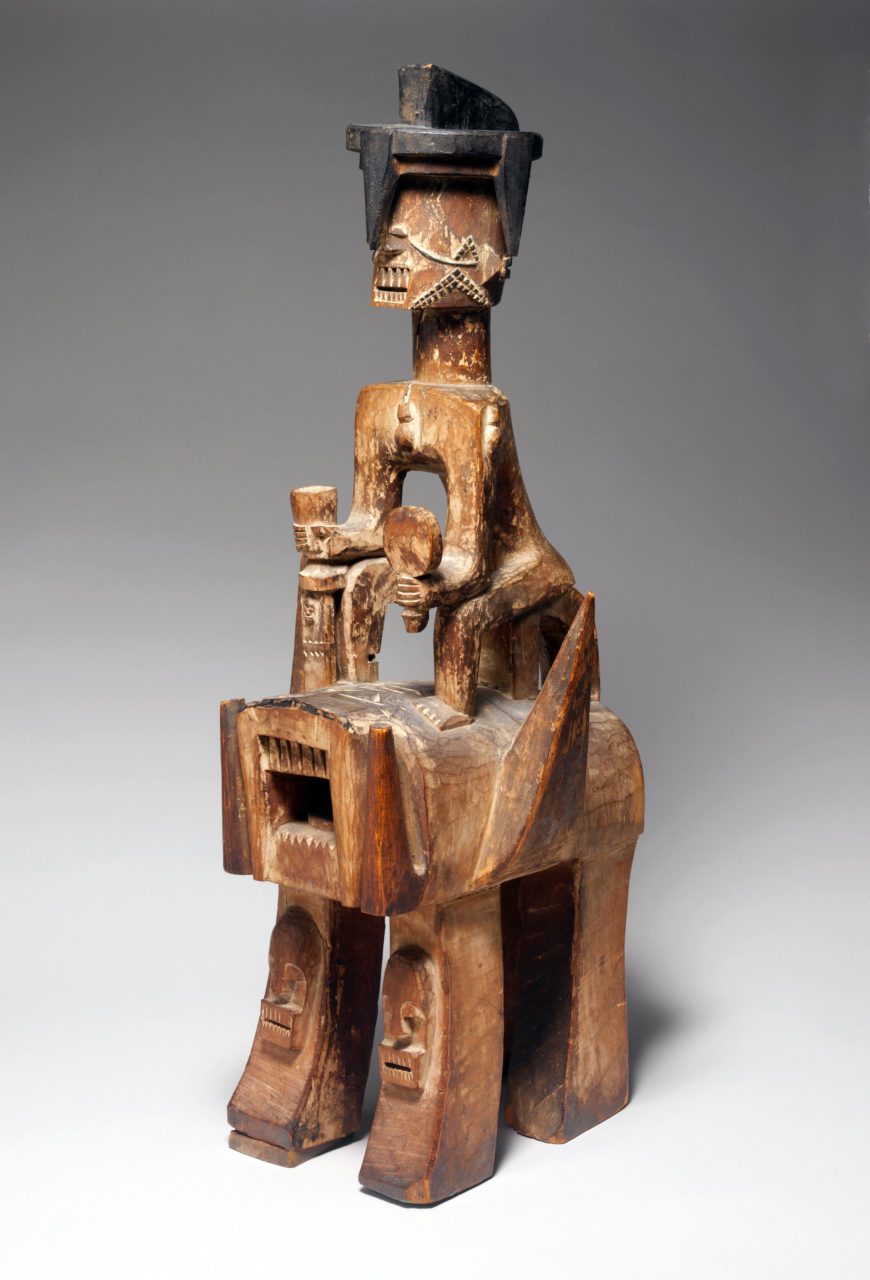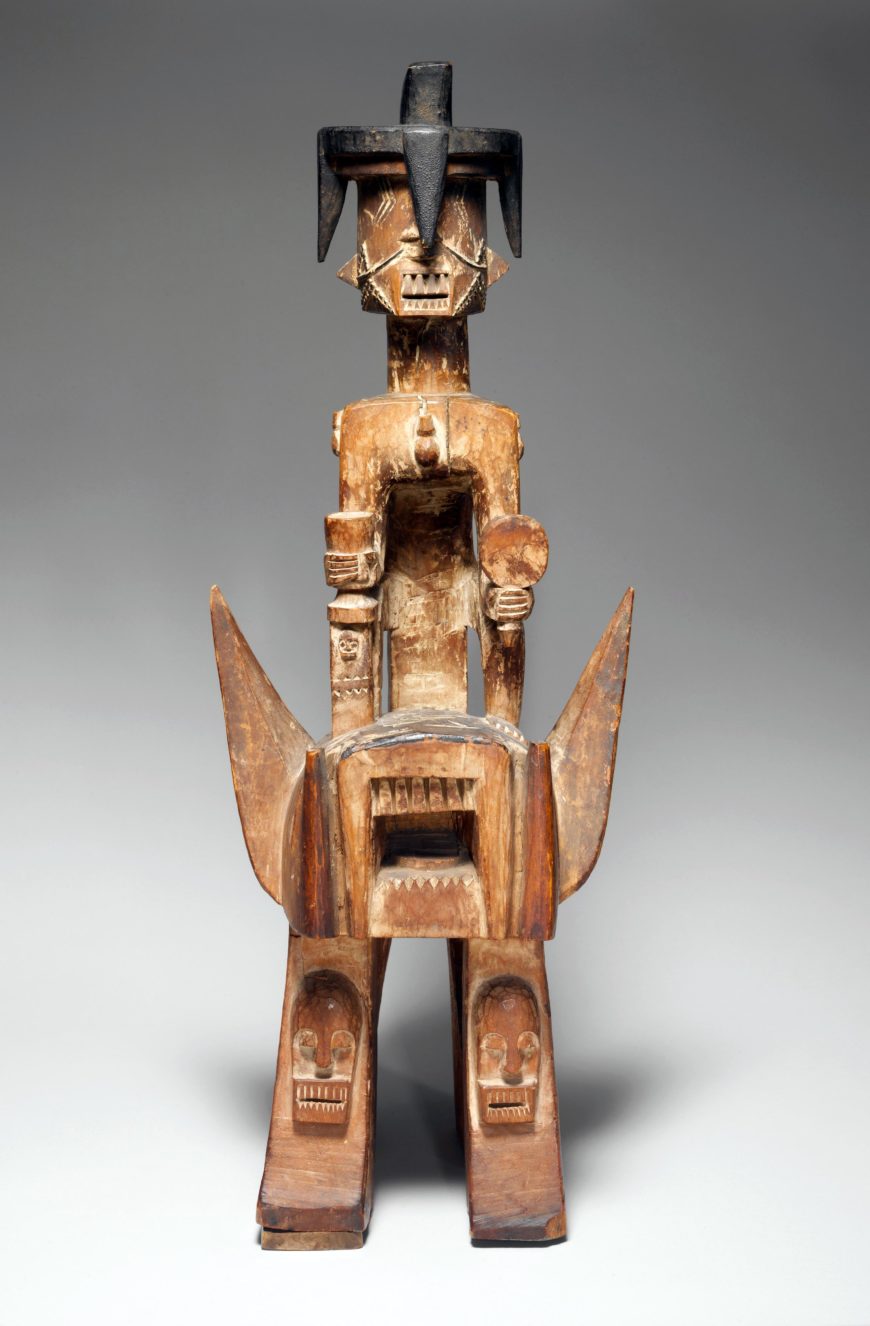
Shrine (Ifiri), Western Ijo, 19th–20th century, wood, paint, Nigeria, Niger Delta region, H. 64.8 cm (The Metropolitan Museum of Art)
Sculptural shrines, called ifiri (or iphri) by the Western Ijo, are found among the diverse communities of peoples living in the Niger Delta region of coastal Nigeria. The creation and use of ifiri are informed by the warrior ethos of the Ijo, who proudly regard themselves as warlike people. The form of ifiri is notable for its raw ferocity, conveyed visually through a combination of imagery that evokes both human and animal elements. Owned by an individual, clan, or family, an ifiri embodies notions of aggression and personal achievement. It offers protection against violence, while serving as a menacing reminder of the owner’s accomplishments and destructive potential.

Shrine (Ifiri), Western Ijo, 19th–20th century, wood, paint, Nigeria, Niger Delta region, H. 64.8 cm (The Metropolitan Museum of Art)
This shrine takes the form of a human being seated on a stool on top of a snarling, four-legged animal. The animal’s massive rectangular head with two large horns, gaping mouth framed by fangs, and bared teeth convey a threatening demeanor. There is no consensus on the source of the animal imagery, which may incorporate the features of leopards, hippos, and/or elephants. On its legs are human heads or skulls with similarly prominent teeth. The figure above represents a warrior, perhaps the owner of the shrine. He wears a headdress with four inverted horns and bares his teeth. The sharp pointed shapes of the horns and fangs add to the sense of aggression. In his right hand, he grasps a cup with which he will pour libations to the shrine. In his left, he displays a small fan that, along with his seated position and scarification marks, symbolize status and wealth.
While the exact meaning of such imagery may be unclear, the function of the work is unambiguous. Offerings to these shrines were believed to contribute to the success of such male occupations as hunting, trade, and war by enhancing strength and ferocity. Additionally, libations were made to express gratitude for past successes and protection. Such shrines continue to be employed as a deterrent against urban violence.
© 2006 The Metropolitan Museum of Art, New York (by permission)




